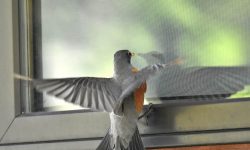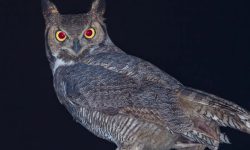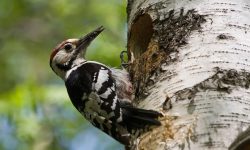Peacocks are among the most visually stunning birds in the world. Their dramatic feather displays have fascinated people for centuries, inspiring myths, symbolism, and admiration across cultures. When a peacock spreads its tail into a magnificent fan, the sight appears almost magical. The shimmering colors, shifting patterns, and rhythmic movements draw attention from anyone watching.
Many people assume peacocks spread their feathers simply to look beautiful. While this is partly true, the behavior serves deeper biological purposes. Every display is rooted in evolution, communication, and instinct. The peacock’s extravagant plumage reflects a complex combination of sexual selection, social competition, and survival strategies that developed over millions of years.
This article explores the real reasons peacocks spread their feathers. It explains the science behind the display, the role of female choice, the mechanics of the tail, and the surprising ways plumage communicates more information than meets the eye. By understanding the full story, you can appreciate peacocks not just for their beauty but also for their deeply intricate behavior.
Understanding the Peacock’s Anatomy

Structure of the train and tail
A peacock’s display is often called a tail, but technically it is something more complex. The iconic fan of feathers is known as the train. This train sits above a smaller, more functional tail that supports the larger feathers during display. The train consists of long upper tail coverts that can reach lengths of more than a meter. These feathers lie flat when the bird is relaxed but rise into a semicircular fan during courtship or social signaling.
Each feather in the train is decorated with an eye-like marking known as an ocellus. These iridescent circles contain vivid blues, greens, coppers, and golds. The colors do not come from pigments but from microscopic structures that refract light. This structural coloration gives the feathers their shimmering, color-changing appearance when viewed from different angles.
The muscular base of the tail allows the peacock to lift and vibrate the train. Special muscles anchored near the spine control this movement. When a male spreads his feathers, the smaller true tail acts like a support beam, keeping the display upright. This combination of structural design and muscular control allows the bird to create one of nature’s most elaborate visual signals.
How feathers grow and develop
Peacocks begin developing their long feathers at around two to three years of age. Before this stage, young males look similar to females. Their feathers gradually lengthen and become more colorful as they mature. This slow development ensures that only fully grown males engage in elaborate displays.
Each year during molting season, the peacock sheds and regrows its train. The new feathers often appear brighter and more symmetrical. This annual cycle ensures the train remains in prime condition for courtship displays. The effort required to grow and maintain such large feathers reflects the bird’s overall health.
Feather growth is influenced by hormones, nutrition, and environmental conditions. A well fed and physically strong peacock produces fuller, more vibrant plumage. These visual signals provide females with important clues about the male’s fitness.
The physics behind iridescence
The shimmering colors seen on peacock feathers come from light interacting with microscopic platelets within the feather structure. When light enters these layers, it undergoes interference, creating intense and shifting colors. This scientific phenomenon is called structural coloration.
Because these colors depend on the angle of light, the train appears to change shades as the peacock moves. Females observe these shifts carefully during displays. The play of light offers more information about feather condition, symmetry, and density, all of which indicate a male’s genetic quality.
The iridescence is not just visually appealing but also highly functional in communication. It helps the peacock stand out within the environment, even from long distances.
The Role of Courtship in Feather Displays
Attracting females through visual beauty
The main reason peacocks spread their feathers is to attract peahens. Females evaluate males based on the size, color, and symmetry of their trains. A larger, brighter display signals stronger genes and better overall health. These traits influence reproductive success and determine which males father offspring.
During courtship, a male positions himself near the female and slowly spreads his feathers. He then begins to vibrate the train, causing the eye spots to shimmer. This movement draws the female’s focus. The rhythm and angle of the display are carefully controlled to maximize visual impact.
Peahens spend time observing potential mates before making a choice. Their attention to detail means that even minor differences in feather arrangement or color can influence their decision. The male with the most impressive display stands the highest chance of being selected.
The importance of the eye spot pattern
Research shows that female peafowl pay close attention to the number and alignment of eye spots. A symmetrical arrangement is especially attractive. These ocelli act as indicators of genetic quality because developing them requires energy, health, and good nutrition.
Males with more numerous or more symmetrical eye spots signal stability and strength. A male with missing or dull spots may appear less desirable because feather condition often correlates with disease resistance or environmental stress.
Peahens make intelligent and strategic decisions. Their choices influence the evolutionary direction of the species. Over generations, this preference has driven males to evolve increasingly elaborate and colorful trains.
Acoustic effects during the display
Peacocks do not rely solely on visual displays. They produce sound through feather vibration. When a male shakes his train, the feathers create a rustling noise. This acoustic element adds another layer to the courtship ritual.
The sound is subtle but plays a significant role during close interaction. Peahens can detect differences in the frequency and rhythm of feather vibrations. A healthier male produces smoother and more consistent vibrations, which the female may interpret as a sign of greater strength.
Scientists have discovered that these vibrations also produce low frequency sounds detectable only at short distances. This adds complexity to the display and helps females assess the male’s performance holistically.
Social Signaling Within Flocks
Establishing dominance among males
Peacocks are social animals that live in loose groups. Within these groups, males compete for territory and access to females. Feather displays help establish social rank. A dominant male often spreads his feathers to assert his status or warn rivals.
These displays occur outside the mating season as well. A male may raise his train to demonstrate confidence or to discourage competition without engaging in physical conflict. Feather displays reduce the need for direct aggression, helping maintain stable social structures.
Subdominant males observe these displays and learn to avoid conflict with stronger individuals. Visual signals therefore play an important role in regulating behavior within flocks.
Communicating presence and confidence
Peacocks use their feathers to communicate more than reproductive interest. Spreading the train can signal alertness or confidence. The sudden expansion of the train creates an impressive silhouette that is hard to ignore. This commanding posture makes the bird appear larger and more intimidating.
In mixed flocks where males and females forage together, a display may indicate readiness to interact or assert leadership. It can also help synchronize social behavior by providing clear cues about the male’s mood or intentions.
This visual communication has evolved as a multifunctional behavior that supports complex group dynamics.
Displaying to maintain territory
Peacocks often claim a small area during breeding season where they perform repeated displays. These territories serve as courts. Males return to the same spot each day to spread their feathers as females wander through and evaluate potential mates.
The act of spreading the feathers becomes part of the male’s territorial advertisement. It signals his presence to both rivals and peahens. By maintaining a consistent display area, the male creates a predictable location in the landscape where females can find him.
Territorial displays combine visual appeal and social communication, reinforcing the male’s dominance within the area.
Female Choice and Evolutionary Pressure
Why females prefer elaborate displays
Female peafowl exhibit selective mating preferences because their reproductive investment is high. They lay eggs, incubate them, and care for young. Choosing a genetically strong mate increases the likelihood that offspring will survive environmental challenges.
Elaborate displays act as honest signals of fitness. Growing a large train requires substantial resources. Only robust, well nourished males can maintain vivid feathers and symmetry. Females use these cues to choose partners with the best potential genetics.
This process is known as sexual selection. Over many generations, it has shaped the dramatic plumage peacocks display today. The demands of female choice essentially sculpted the species’ appearance.
Genetic benefits of choosing impressive males
Females that choose high quality males increase the chances that their offspring will inherit favorable traits. These may include disease resistance, physical strength, and attractive plumage. Stronger offspring survive longer, reproduce more effectively, and continue passing these traits forward.
By selecting males with the most impressive displays, peahens drive evolutionary progress. This phenomenon explains why male peacocks evolved such extraordinary plumage compared to females, who remain brown and camouflaged for nesting.
Females balance their need for genetic quality against the risks associated with choosing mates. Display traits must remain honest indicators of male health. Males that attempt to cheat by exaggerating traits would not survive long enough to reproduce.
The cost of the train strengthens the display’s honesty
A long, heavy train can attract predators or make movement more difficult. Growing and maintaining such extravagant feathers requires energy. The train also reduces a male’s mobility. These costs ensure that only truly strong males can afford the burden.
This concept is known as a handicap principle. A male with a cumbersome train who still thrives demonstrates exceptional fitness. Females recognize this and choose accordingly. The benefits of selecting such a mate outweigh the risks.
Thus, the train’s cost ensures that it remains a reliable signal of male quality, preserving honesty in the mating system.
How Peacocks Use Feather Displays in Predator Defense
Appearing larger to ward off predators
Although the primary function of spreading feathers is related to courtship, the display can also intimidate potential predators. When threatened, a peacock may expand its train to appear larger. This sudden change in size and shape can startle predators and give the bird time to escape.
The eye spots add to the display’s intimidating effect. From a predator’s viewpoint, these spots create the illusion of multiple eyes or the face of a larger animal. This confusion gives the peacock a brief advantage.
This defensive behavior does not replace escape. Peacocks rely primarily on running when threatened. However, the display offers an initial deterrent that may discourage a predator’s approach.
Using sound to complement the display
Peacocks produce loud calls when alarmed. These calls alert other birds and animals in the area. When combined with feather spreading, the vocalization creates a dramatic effect that can confuse predators.
The sudden noise and movement may cause a predator to hesitate. This hesitation can be enough for the peacock to flee. The coordination of sound and sight works as an effective short-term defense.
The display’s versatility helps ensure survival in environments where predators are common.
Protecting mates and chicks
Male peacocks may spread their feathers to shield females or young chicks from predators. The large fan of feathers acts as a distraction. While the predator focuses on the male, the female or chicks can escape.
This protective behavior reinforces the male’s role within the group. It demonstrates responsibility, strength, and readiness to defend the flock.
Although not as common as courtship displays, this defensive use of feathers highlights the multifunctional nature of the train.
Environmental Factors Influencing Display Behavior
Seasonal changes and breeding cycles
Peacock displays increase dramatically during the breeding season. Hormones drive males to perform frequent and elaborate displays. As temperatures rise and daylight increases, males become more active in seeking mates. The train becomes fuller and more vibrant during this period.
Outside the breeding season, males still spread their feathers occasionally, but the behavior becomes less frequent. Molting reduces the train’s size, and energy shifts toward feeding rather than performing displays.
Seasonal changes guide the rhythm of peacock life. Their displays follow an annual cycle tied to temperature, rainfall, and daylight.
Habitat structure and visibility
Peacocks prefer open areas where their displays can be easily seen. They choose locations with good visibility to attract passing females. Habitat structure influences display frequency and success.
In dense vegetation, displays may lose effectiveness. Females cannot see the full train, reducing the impact. Therefore, males gravitate toward open fields, grasslands, or clearings.
Human modified environments such as gardens and estates often provide ideal display locations. This explains why peacocks thrive in captivity and semi wild settings.
Food availability and physical condition
A peacock’s ability to perform displays depends on overall health. Access to abundant food ensures that males can grow large trains and maintain energy for frequent displays.
During periods of drought or food scarcity, display intensity may decrease. Feather condition declines when nutrition is inadequate. Females easily detect these subtle changes.
Environmental stress therefore has a direct impact on display success and reproductive outcomes.
FAQs About Why Peacocks Spread Their Feathers
Do peacocks spread their feathers only for mating?
Mostly yes. Courtship is the primary reason, but they also display to assert dominance, defend territory, or intimidate predators.
Do female peacocks spread their feathers too?
Peahens do not grow large trains. They may lift their short tails for signaling, but they do not perform full displays like males.
How often do peacocks spread their feathers?
During breeding season, males display daily. Outside this period, displays become less frequent but still occur occasionally.
Do all males have the same number of eye spots?
No. The number and symmetry vary. Females prefer males with more evenly spaced and vibrant eye spots.
Can peacocks fly with their train?
Yes. Despite the size of the train, peacocks can fly short distances. They rely on strong wings to reach roofs or branches.
Why are peacocks so colorful?
Their colors come from microscopic feather structures that refract light. This creates iridescent blues, greens, and golds.
Does spreading feathers attract predators?
The large display can attract attention, but males rely on speed and awareness to escape danger.
When do young males start displaying?
Juvenile males begin practicing displays before their trains fully develop. Their early attempts help prepare them for future courtship.
Is the display an example of sexual selection?
Yes. Female preference for elaborate feathers drives the evolution of the male train.
Do peacocks molt their feathers?
Yes. Males shed and regrow their trains annually after the breeding season ends.
Final Thoughts
Peacocks spread their feathers for reasons deeply rooted in biology, evolution, and communication. The display is a powerful tool shaped by millions of years of sexual selection. It allows males to attract mates, signal dominance, and occasionally ward off predators. Every shimmer, vibration, and movement carries meaning. The beauty of the train reflects the health, strength, and vitality of the bird behind it.
Understanding why peacocks spread their feathers reveals the intricate balance of nature and the complex forces that shape animal behavior. Their displays remind us how communication in the natural world goes far beyond sound or movement. It includes color, light, symmetry, and rhythm. Peacocks remain one of the most extraordinary examples of how evolution can create beauty and purpose in a single breathtaking gesture.
Their displays inspire wonder, curiosity, and admiration. By appreciating the science behind them, we can enjoy not only their beauty but the remarkable story that each feather tells.






